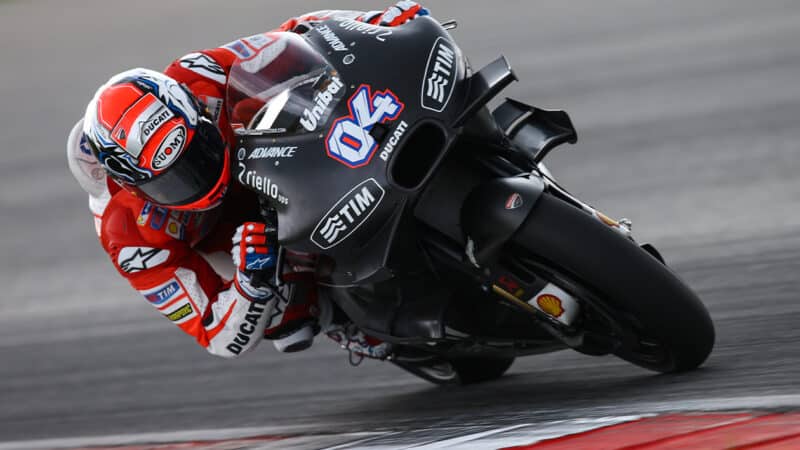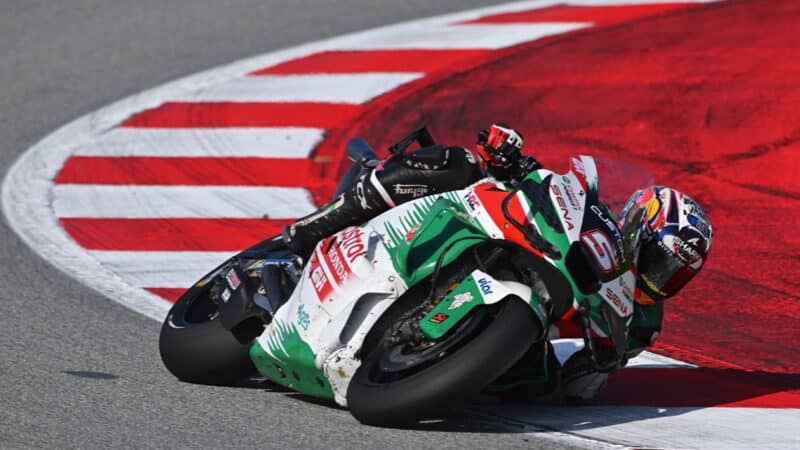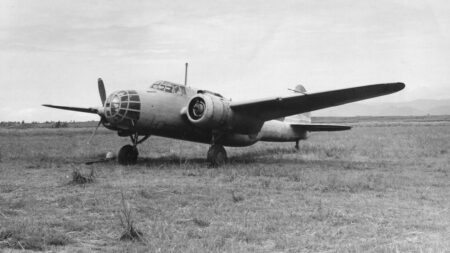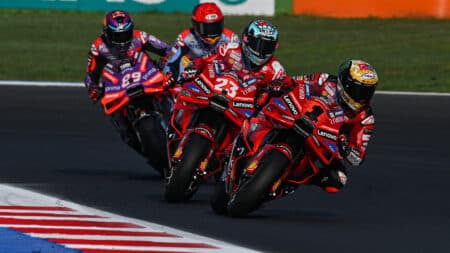“Our opinion is that we want to develop technology that can be transferred to streetbikes, because this is one of the main reasons we go racing,” HRC technical manager Takeo Yokoyama told me back in 2019. “And in the case of aerodynamics we don’t think we can convert so much technology to streetbikes. We need to stay connected to the street market, which is why extreme aerodynamics is not the right way to go.”
Yokoyama also prophesied MotoGP’s 2027 rule changes, written to curtail the increase in MotoGP performance, largely attributed to downforce aero.
“Increasing front-tyre contact with aerodynamics is good for safety, but you don’t have to do this with downforce – you can change machine weight distribution, pitching behaviour and so on,” he added. “In fact the safety discussion can go the other way: if you use downforce to increase front contact, you can use more torque, so the bike accelerates even faster. So maybe the acceleration will go from 1.2g to 1.5g, so the motorcycle will be even faster…”
The unwillingness of the Japanese brands to travel down the road towards two-wheeled Formula 1 was obvious to anyone watching MotoGP. While Ducati equipped its Desmosedici with ground-effect aero for the 2021 season, Honda took another 20 months to follow suit and Yamaha even longer.
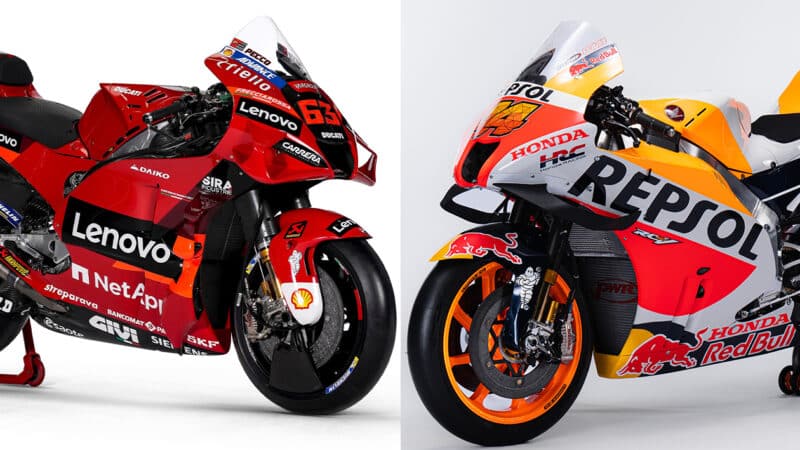
Ducati’s Desmosedici GP22 and Honda’s 2022 RC213V – worlds apart in terms of downforce aerodynamics accoutrements
Ducati/Honda
And that’s why Honda’s aero is still so far behind Ducati’s. How to fix the problem? This is a new science, so the only sure way to rapidly increase your knowhow is to hire engineers who already have that knowledge, which means people from Ducati, Aprilia and KTM.
Honda hasn’t done this so far; instead relying on its own experiments, which is most likely a very slow way to gain knowledge.
“Aero is a new dawn,” says Joan Mir’s factory Honda crew chief Santi Hernandez. “Of course the manufacturers that are in front have a better understanding of what they can do with the aero. Working on [downforce] aero can give you many possibilities but you need to understand aero well, because maybe you design some aerodynamics to help in fast corners, but it’s worse for wheelies and stopping. For this reason it’s very complicated, so it’s very difficult to achieve what you need. For this reason Honda is trying many aero things with different riders to understand the effect, how to improve and how to upgrade. Aero is amazing!”
Meanwhile Yamaha has stolen Ducati’s chief aerodynamicist Marco Nicotra, who previously worked on Formula 1 aerodynamics, and technical director Max Bartolini, whose arrival has transformed the factory’s engineering line-up. At last November’s post-season Barcelona tests the Yamaha garages were populated by as many European engineers as Japanese.
Honda has taken a first step in that direction, signing Aprilia chief engineer Romano Albesiano, who will be the first European to run Honda’s MotoGP programme, something that would’ve been unthinkable just a few years ago. Albesiano has already been testing with Honda’s new chief MotoGP tester, Aleix Espargaró. Together they bring a lot of Aprilia knowhow with them.
The big question is this: is one new boss enough to change Honda’s approach? Or will the company need to hire more Europeans in the future? My feeling is that Albesiano will try to do just this, just like Bartolini.
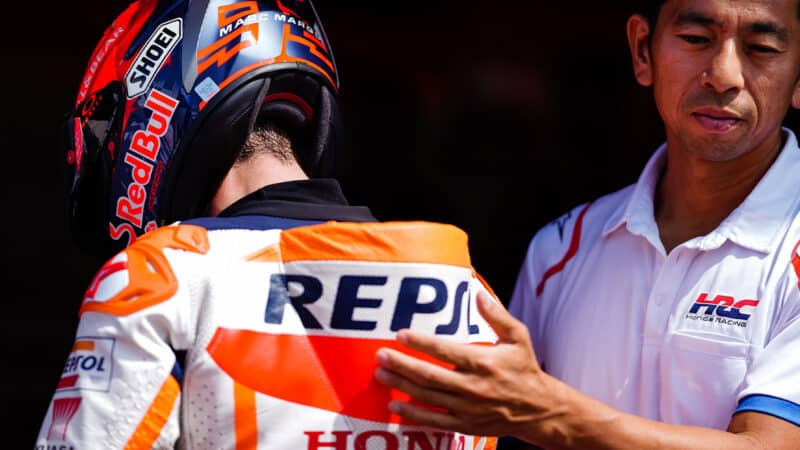
Marquez and Yokoyama in 2022
Honda
Meanwhile, what do Honda’s longer-serving technicians think?
“We still struggle in two main areas,” adds Hernandez, who started at Honda with Marc Márquez in 2013. “We miss traction in the acceleration area, so we are losing acceleration, because we don’t have enough grip. And our bike isn’t fast enough on the straights, so we aren’t able to slipstream other bikes or pass them. I cannot say if this is aerodynamics or the whole bike.”
Johann Zarco, Honda’s fastest rider last season (because he can use more corner speed than the other RC213V riders) agrees that the bike needs better downforce aero, because last season he struggled with too much wheelie.
“The Ducati stops better, the bike is stable and the rear end stays down. It’s like a rally car!”
“The engine has good power, but we have too much wheelie,” says the LCR Honda rider. “So I’m losing in acceleration and also in preparing for the next corner, because I’m fighting wheelies. And if we set up the bike to have less wheelie we lose grip.”
This poor acceleration is a major part of Honda’s inability to cut the same lap times as the fastest bikes.
“In Buriram [Thailand] we were losing two tenths in acceleration from Turn 1 to Turn 2 and another two tenths from Turn 3 to Turn 4, so almost half a second, which makes things quite difficult,” explains Hernandez.
Some of the RC213V’s exit problems come from entry problems.
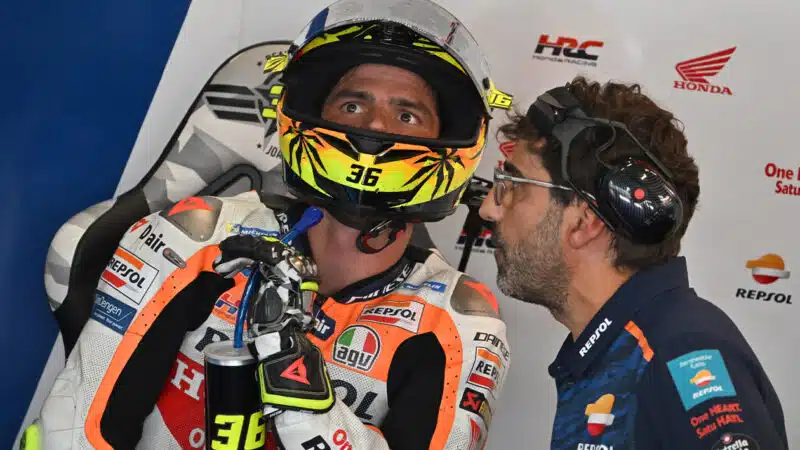
Mir and Hernandez trying to make sense of it all at last year’s British GP
Honda
“Rear grip also helps you stop the bike and if you can stop better then your corner speed, your cornering lines and your exit line are different,” continues Hernandez. “If you’re not able to stop the bike then the rest of the corner is missing – you destroy it all on the brakes. We can see that the Ducati stops a lot better, the bike is quite stable and the rear end stays down. It’s like a rally car! We need to understand this.”
And this is how it feels from the rider’s point of view…
“It’s very difficult to stop the bike,” says Mir’s team-mate Luca Marini. “Even if the rear tyre is touching the ground it’s skating [not gripping]. Everything starts from corner entry. We have to use the front brake more than the others, so we’re struggling with the front tyre – close to crashing at every corner – so we have slower corner speed and then more wheelspin on the exit.”
Much of this entry/exit problem come from the same problem – not loading the rear tyre correctly. This is most likely a combination of not loading the tyre mechanically – via chassis balance and geometry – and not loading it aerodynamically – via downforce.
